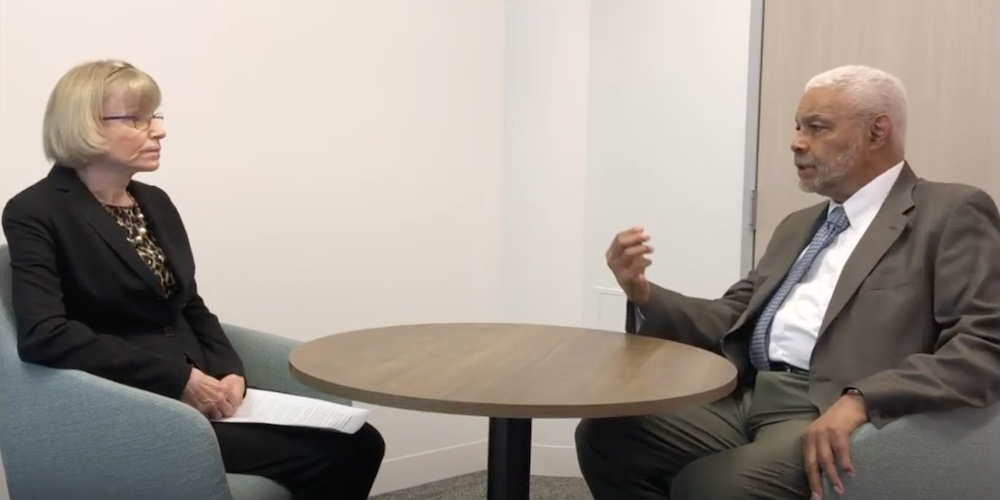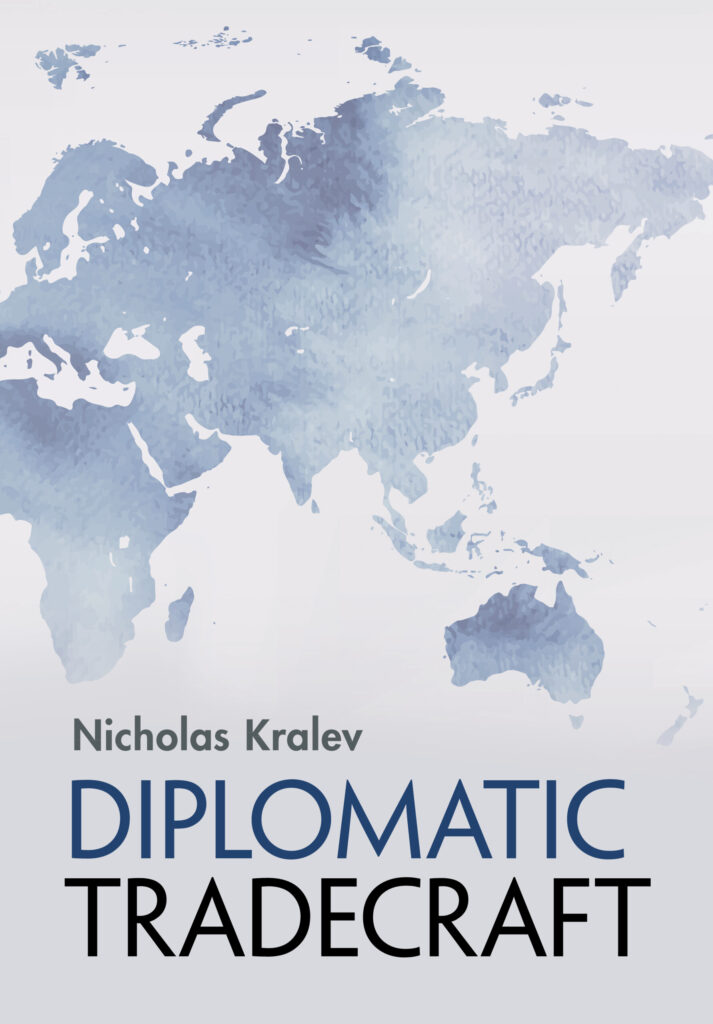Running a Mini-Government at Diplomatic Missions Abroad
Managing multiple agencies overseas is an uphill battle, but the importance of working as one team cannot be overstated.

A diplomatic mission is an organization like no other. Its members live and work away from home, and the line between their professional and personal lives is blurred to an extent most outsiders do not fully understand or appreciate. In the average workplace, a supervisor is not concerned with what employees do at home. That is not the case in a diplomatic mission. Its staff is a community, and excessive drinking, a nasty divorce, threats of violence or a suicide is not just one family’s problem. It affects the section in which that person works, and often the entire mission. So managing such a workplace is a unique and daunting task, made even more difficult by being in a foreign country.

It’s a constant struggle to make sure that representatives of multiple government agencies abroad work as one team — perhaps the biggest challenge in a diplomatic mission, whether it is an embassy, consulate or one accredited to a multilateral organization. It’s an uphill battle, because of the different cultures and agendas of the agencies, the limited experience working in such a unique environment many of their staffers have, and the lack of proper training before they are sent abroad.
“It’s hard to galvanize and gain the confidence of the interagency, so that you can get them to work together toward one purpose,” Virginia Blaser, a former senior Foreign Service officer, told Nicholas Kralev, founder of the Washington International Diplomatic Academy and editor of the book “Diplomatic Tradecraft.” “I don’t think institutionally they are created to do that very well.”
The President’s Emergency Plan for AIDS Relief, better known as PEPFAR, is a U.S. program created in 2003 that has invested more than $100 billion in the fight against HIV and AIDS. According to the State Department, it represents the largest commitment by any government to combat “a single disease in history,” having saved 25 million lives, supported antiretroviral therapy for 20 million adults and children, and made it possible for nearly 5.5 million babies of mothers with HIV to be born free of the virus.
Although PEPFAR is housed in the State Department, the U.S. Agency for International Development (USAID) and the Centers for Disease Control and Prevention (CDC) usually take the lead in implementation abroad. Most of the $100 billion has been spent in Africa, where in some countries, PEPFAR provides more than 90 percent of the entire U.S. development budget. Every year, there is fierce rivalry between USAID, CDC and sometimes other agencies to get a bigger piece of the resources that have been allocated to a particular country, Blaser said. As a result, chiefs and deputy chiefs of mission (DCM) have to act as referees between agencies. “USAID may have better connections and more experience in a certain country, but CDC may be more efficient and have a greater impact,” she noted. The ambassador or DCM should not be seen as favoring one agency over another. So it is a serious challenge, and it is made worse by the fact that both agencies provide similar services, sometimes in the same building, but they rarely cooperate, Blaser added.
She recalled a U.S. Secret Service representative briefing her on an operation in a country where she was the DCM. She realized that the embassy’s regional security office was working on another case in the same town and thought that they could be connected. The two offices, however, had not talked to each other. “So I had to be essentially a telephone operator,” Blaser said.
John Feeley and James Nealon, former U.S. ambassadors in Central America, explored the reasons for the different bureaucratic cultures in a 2022 article about the Drug Enforcement Administration (DEA). “Most DEA agents have been U.S. street cops. Most Department of Justice officials sent overseas have served as assistant U.S. attorneys or are career DOJ staff — folks for whom judicial independence, the sanctity of an investigation and the sacrosanct pursuit of a conviction in a U.S. court trump all other considerations,” Feeley and Nealon wrote. “This makes for an extremely bad fit when joining a diplomatic organization, where relationships and policy goals are measured in shades of frustrating gray, and where the ambassador is, by presidential order, the boss.” Not only do such officials fail to coordinate and collaborate with other agencies, but they often “freelance,” instead of consulting with the chief of mission or the DCM, Feeley and Nealon wrote.
As ambassadors and DCMs, the two of us were confronted with one type of interagency friction or another almost every week. Resolving disputes and finding fair solutions requires patience and perseverance, as well as the ability to communicate a common mission and inspire others to work toward it as one team. The quintessential example of interagency dysfunction in the U.S. government are the 9/11 terrorist attacks in 2001, when the failure of the FBI, CIA and other agencies to share information they possessed prevented them from detecting the al-Qaeda plot to hijack commercial aircraft and fly them into buildings. The implementation of some of the post-9/11 policies overseas led to interagency challenges as well.
In 2002, Washington tasked U.S. embassies in countries with Muslim communities to conduct outreach meant to explain that the United States was not at war with their religion, but with terrorism. Charles Ray was the ambassador to Cambodia at the time. He, along with the political and public diplomacy sections, meaning the State Department, wanted to fund an educational program for ethnic Cham, a small Muslim community that was often overlooked by the host-government. Funding, however, had to come from USAID, and its director in Cambodia was not on board with the idea. The agency’s policies required it to fund country-wide programs, not specific groups, he explained. A compromise resulted in a program for underserved Cambodians, which did not name any particular groups. It significantly changed the Chams’ and others’ perception of the United States.
A well-run country team, which includes the mission’s senior leadership, is essential to effective interagency cooperation. The weekly team meetings should not be just a briefing for the ambassador by section and agency heads, but a forum for exchange of information, views and ideas, so that everyone knows and understands everything going on that is important to their work. And those meetings should not be where the cooperation stops. If the ambassador hears about a key development or a serious problem for the first time at the meeting, it may already be too late. Team members should keep the front office, as well as each other, in the loop and work together more than once a week. Below the senior leadership, midlevel and even junior officers should also be included in the process, at least as note-takers. That would allow them to see how things work and appreciate the value of the interagency early in their careers, so that one day they can run it more efficiently.
Most U.S. embassies have one or two junior Foreign Service officers assigned as assistants to the front office, which provides the best education on how a diplomatic mission works. As key staff aides, they see almost everything that comes to the attention of the ambassador and the DCM and get to attend meetings to which they would have no access otherwise. When Blaser was DCM in Uganda, she created a system that allowed junior officers from all parts of the embassy to rotate through the front office for several weeks.
“I think every single one of them” took advantage of this opportunity, Blaser said. “They came out much better officers who were easier for us to work with, because they knew even the most parochial issues.”
Charles Ray is a former U.S. ambassador to Zimbabwe and Cambodia and consul general in Ho Chi Minh City, Vietnam.
Janice Jacobs is a former U.S. assistant secretary of state for consular affairs and ambassador to Senegal and Guinea-Bissau.
The above is an adapted excerpt from the book “Diplomatic Tradecraft,” published with permission from Cambridge University Press. © Nicholas Kralev 2024

